~Catalogue~
- ESP
- BABICZ
- Ray Ross
- Kahler
- Hip Shot
- Mastery Bridge
- Evertune
- 2TEK
- Ibanez
- Warwick
- K&T Pickup
- Sonic Pickups
- Seymour Duncan
- Kuwabara Pickups
- Aero Instrument Pickups
- Nekodamari Koubou
- Lace Music Products
- TV Jones
- Delano
- Nordstrand Pickup
Act III: Pegs and Miscellaneous
- GOTOH
- GraphTech
- Schaller
- -HATA-
- tatsuta Titanium Parts
Act I: Bridges
Cheena:We have been talking about special parts for a while now, but here are some more great ones. First of all, let's take a look at the ESP Kusabi, which can be said to be the top of the line.
This bridge is completely made-to-order and costs over 150,000 yen per piece. According to the manufacturer, the bass plate, octave tuning section, and string height adjustment section are all in perfect contact with each other, and the bridge boasts an extremely long sustain. Muting technique is required.
Nemoto:Wow, that's expensive...I'm curious about it, but I can't afford it....
If you want to imagine how much it changes, I recommend BABICZ for now.
BABICZ / FCH Z Series 4-String Bass Bridge Chrome
This is a product with a saddle contact area 50 times larger than that of a typical Fender-style bridge, which you can expect will improve the sustain. You can see the effect after increasing the contact area, so if you like it, you may like to try Kusabi.
Cheena:As the name “Full Contact Hardware” implies, the base plate and the saddle are in perfect contact, and the string height can be changed by rotating the part where the strings pass through. Well…let's maybe not think about whether the saddle and strings are in surface contact or not. Because at least it has an effect.
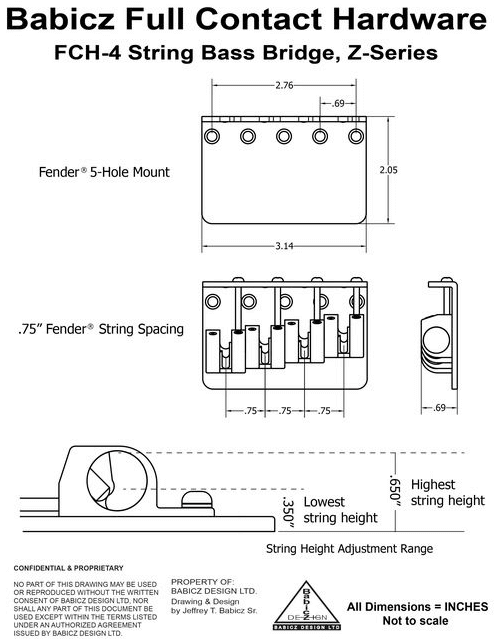
BTW, BABICZ was originally a guitar maker and was also associated with Steinberger. It was founded in 2003 by Jeff Carano and Jeff Babicz, who had been chief executives since the 80s, right?
Currently, they sell a unique looking acoustic guitar that anchors the strings to the end of the body for about $1,500.
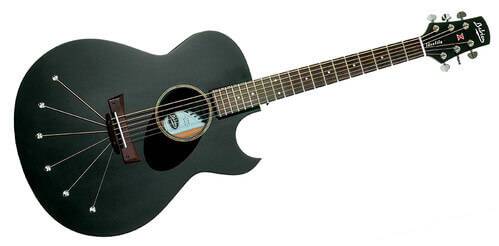
Now let's go to the next bridge.
Now that we have seen bridges with extremely large contact areas, let's look at the smaller ones. Ray Ross.
Ray Ross Saddle-Less 4-String Bass Bridge Gold
Calling itself a “saddle-less bridge”, this allows both string height adjustment and octave adjustment where the ball end is hooked. But, I wonder if it is OK to put the tapered part near the ball end and the insecure part where the wire is caught on the vibrating part?
Nemoto:I don't think it's a problem, but when you put the strings on, you have to squeeze the strings to get rid of the twist, otherwise the strings will rotate.
I mean, if you use F-bass Exposed Core strings as they are, you may feel some discomfort, so you should be careful to remove the twists properly.
Cheena:Well, you need to take out the torsion in a normal bridge as well. But the ball ends are cut round so that they don't rotate, and the end holes are definitely made to face sideways. So you may not need to be too nervous about it.
Schecter's dUg Pinnick 12-string (4x3) bass also seems to have the ball ends aligned (holes are visible from the front), and it looks good...or does it?
Nemoto:There you go, 12 strings. I'm also interested in the Gretsch (bass) 12-string. It's a little strange to have 12 strings coming out of a traditional Cadillac tailpiece, but it's gorgeous. It’s just so darn expensive.
Cheena:Well, the number of pegs is tripled and the bridge is custom-made. It can't be helped.
It’s more shaky than a 12-string guitar (6 x 2), and it’s a physical 3-phase flanger. Like an organ, it has a really cool sound on its own, so if you see one, you might want to try playing it.
Do you want to look at the tremolo connection as well?
Nemoto:Let's do that.
As for vibrato units for bass, I think the major ones are Koehler and Hipshot.
I don't know much about guitar vibrato units.
I know the types of vibrato units, but I don't know the makers of them.
Cheena:The Kahler is a tremolo with a very smooth bend. Although it satisfies the functions required of a modern tremolo, I wonder if there are any guitars other than Kz Guitar that use it nowadays. ...... It’s sometimes used in Carl Thompson and Warwick, and Arai Boeki was the import agent for bass guitars. The same is true for the bass guitar, which is sometimes installed on Carl Thompson and Warwick guitars.
Currently, the only site to get it from Japan is the official site or Thomann, but the latter is not less than 350 euros compared to the official $419, which is basically 50,000 yen or more. The price of the latter is not less than 350 euros compared to the official price of 419 dollars, which is basically 50,000 or more.
Oh, one thing I can say is that it is easy to implement, though not as easy as the Mustang tremolo.
Hip Shot makes a variety of tremolos for basses, headless bridges, and so on. Of course, they’re expensive.
HIP SHOT / 4 String Bass Tremolo Chrome .708
However, if you want to use a B Bender or a simple floating tremolo, this may be your only choice.
HIP SHOT / Parsons/Green String Bender
Nemoto:To all of my dear readers, if you want a bass with a vibrato unit, you should look for a used Rosso rather than buying a new bridge and modifying it. 50,000 will get you a 5-string (or more, since they seem to be pretty rare now), and it’s probably cheaper than a hipshot if you include the labor cost.
I don't remember if blade has one either.
Derailment.
I used to have a used Samick (entry-level Korean guitar brand). The Floyd Rose on it was the real thing, so I bought one, took off the parts, and threw it away....
Cheena:Even a Floyd Rose is a luxury item that would normally cost about 20,000 yen for a single unit. It looks fairly common, but it’s high-end enough: ......
Now, Mastery Bridge is another high-end tremolo. The unique saddle-shaped bridge and the high-end Jazzmaster tremolo.
Nemoto:This is great. My brother has a Jaguar and a Jagustang in our house, but the strings fall off....
It was expensive, but it was worth it.
Cheena:It is said that the bridge has eliminated the problems of the synchro, but if you use strings with a certain amount of tension, 010-011, you can avoid string drop on both the Jaguar and the Mustang. The reason for this is that the basic structure is similar to that of the original design, but the strings are modern and thin, which in turn means they have low tension.
Well, Mastery is good looking.
Nemoto:Well, I hear that the dynamic vibrato on mustangs doesn't work well with thin strings.
I have an image that the strings used to be thicker and higher in height.
Cheena:As for whether thick or thin strings are better, I have no comment because I would end up starting a religious war.
Let's go next as this is a demilitarized zone. Let's move on to what's hot these days.
Evertune is said to be “a clever combination of spring and lever that keeps it in constant tune.” Well, it’s not. Sound too good to be true? It’s not. (You think I’m sounding like a used car salesman? It’s true!) It gives an overwhelming sense of confidence. Price: $295!
US7888570B2 - Stringed musical instrument using spring tension - Google Patents
Nemoto:Well, isn't this interesting? I'm tempted to get one. $295 is expensive, but I can afford it if I think of it as an expensive effects pedal.
Cheena:I see that the one for bass is currently under development. But this one is very well supported with Tune-O-Matic compatible templates, guide videos, etc., and it comes in black and gold as well as chrome.
They even show what guitars cannot be equipped with the Tune-O-Matic. For example, it seems that it is difficult to mount a full acoustic guitar with a very thin board, such as a Jazzmas or a full acoustic guitar with a thin board, which may interfere with the tremolo mounting.
By the way, in Japan, Alien Sound Works (Bunkyo-ku, Tokyo), Combat Guitars (Itabashi-ku, Tokyo), and their directly managed store, Arms Factory (Hachioji, Tokyo), are able to mount them.
Nemoto:Ho. Arms Factory is new to me. I know Combat is pretty accommodating when it comes to ordering (not sure about now, though). Aside from that, I guess they're doing it like BFTS, where you go through a training course and then a license is issued. I hope there will be more of them in the future.
Cheena:Well, there seem to be a lot of guitars sold with it, so it might be a good place to try it out.
I'm hoping to get one for bass for now.
By the way, did we talk about the 2TEK bridge in another article?
Nemoto:Probably not.
Cheena:It's a huge chunk of metal that costs $25,000 ........., rather like a large-scale bridge.
The lineup includes 4 & 5 strings for guitar and bass, and it is said that the string vibration does not easily transfer to other strings. There are no direct sales, and most are available at Warmoth. Occasionally B-stocks seem to appear on Thomann.
Also, I think they have a cover around the bridge to give it an escutcheon look.
Nemoto:A quick look at the “connected triple lockdown”
HIP SHOT / Triple-Lock Down Small Groove Long Tube Gold (1)
The fact that it is this hard to transfer string vibration is also like a freestanding bridge. I wondered which one would be easier to install, but I couldn't come to a conclusion. It depends on the person.
Cheena:Lock Down is probably easier. In any case, 2TEK has to drill a big hole through the body, and if you look at Warmoth's machining simulation, it looks awesome.
Nemoto:But in the case of lockdown, if you don't make a solid template, the pitch between strings will be off, right? If you include that, I think the machining difficulty is high. It would be easier if you could download a template or something.
Cheena:Oh… I never thought about it because when I put the stand-alone type on, I took the center and put a Thickness Gauge-like board between the center and the eyes.
Nemoto:You're used to it.
I think it's right to use a template, so you should do it properly with the intention of modifying someone else's guitar. It could be an irreversible mistake and you'll lose credibility with clients....
Cheena:Yes, that's right. You can't do it in a quirky commercial ......
However, although independent bridges (solo bridges) have many advantages such as relatively free string spacing, fan-fret compatibility in any scale, and they have no problem even with a super high number of strings, so they are also expensive.
The price per unit is as follows: Hip Shot Triple-Lock Down is 3,500-5,000 yen, Ibanez Mono-Rail is 2,500 yen, which is the lowest price among the named makers, Hip Shot Solo is around 4,000 yen, Babicz FCH Solo is 10,000 yen, and sometimes it’s 6,000 yen at Sound House. Babicz's FCH Solo, priced at 10,000 yen, is sometimes sold at a special price of 6,000 yen at Sound House.
Even a 4-string bass is double or triple the price of a Gotoh 201.
HIP SHOT / Triple-Lock Down Large Groove Long Tube Chrome (1)
Ibanez / 2BB1MR2K Mono-Rail II Bridge Cosmo Black
HIP SHOT / Solo - Single String Bass Bridge Gold
Nemoto:The manufacturing difficulty and material costs are very high.
A bridge with a complex and heavy structure would cost about 15,000 to 20,000 yen, so you have to compare it with those.
Cheena:Most solo bridges are manufactured, and each unit requires two or more wood screws to connect to the body. So, most bent-plate bridges are not comparable.
Nemoto:It's an expensive specification from the start.
Please think about that, readers.
Cheena:Material cost is also a factor to be considered. To take an extreme example, a set of bridge/tailpiece for Warwick made of brass is almost 10 times more expensive than a set made of steel.
Nemoto:That one scared me.
Brass is 10 times more expensive than iron, but if you consider the amount of brass used in a product, the price difference is about 500 yen at best....
Hardness varies depending on the composition, but it's not like the processing difficulty suddenly increases.
Cheena:I'm going to assume that half of it is a branding fee. It is definitely one of the cheapest split type bridges. ......
Nemoto:Split type is getting more and more popular.
I have the impression that Hipshot D type made it popular. That one is also over 20,000 yen for 4 strings, so I guess I can put it in the high end.
HIP SHOT / 4 String D Style 2 Piece System Chrome .750
Cheena:The bridge parts cost 13,000 yen and the tailpiece 8,000 yen, and as usual with Hip Shot bridges, there are various options for the pitch between strings, plus +/- 1.5mm.
Nemoto:That's what I like about Hip Shot.
It's made in the U.S.A., but it's very accurate.
Personally, I prefer a narrower string spacing, like 17.5mm, but I was wondering if 20mm would be OK for arpeggios and such. Looking at Anthony Jackson.
Cheena:At 20mm, the neck side will be correspondingly thicker, and the pole pitch on the pickup side will not match more often. ...... Yes, let's talk about pickups next, shall we?
Act II: Pickups
Nemoto:The interesting thing about the world of pickups is that it is a world where the price varies greatly depending on “who designed and wound the pickup. In that sense, it is similar to musical instruments.
K&T, which I mentioned at the top of the list, is made by Jun Takano.
Other famous meisters are Mr. Yutaka Takeda (Sonic), Mr. Seymour Duncan (Seymour Duncan's hand-wound pickups are expensive), Ms. Abigail, a master craftsman who has been winding pickups for Fender since 1958 (her works have started to rise in price since she retired), and Mr. Kurt Schwartz, who supplies pickups to Fender, Sir, etc. and is also a master craftsman of K&T pickups. There are many female engineers, such as Ms. Kuwabara, who supplied pickups to Fender, Sir, etc. and started her own brand, Kuwabara P.U. Pickups, like musical instruments, are oriented toward vintage.
Pickups, like musical instruments, can be categorized into vintage-oriented or modern-oriented. K&T is quite vintage oriented, while Aero is quite modern oriented.
Cheena:In terms of recent up-and-coming pickups, there is Nekodamari Kobo.
It was originally a beeswax wax studio and they have created a pickup that can be used for potting.
It looks like the price is from 9,000 yen.
Nemoto:Yeah, I saw it. I'm curious about that one.
I wonder how it sounds compared to traditional wax.
Cheena:Cheena:So-called wax potting uses paraffin refined from petroleum and melts at 48-69℃ (if you follow the standard), while Nekodamari Kobo uses beeswax which has a relatively high melting point and is adjusted by adding waxy jojoba oil or squalane oil. I don't think there is a big difference in chemical properties, but Nekodamari Kobo's clear beeswax wax is at a level where it melts on human skin, so I don't think they use it as it is.
Nemoto:Oh, I see. Although there doesn't seem to be a big difference, the physical properties are certainly different. There will be a difference in sound. Whether people can perceive it or not is another matter. I thought I could buy one for 9,000 yen, but I don't have a test unit...
PS: After the article was published, Nekodamari Kobo provided us with comparison data when using regular paraffin wax, classic beeswax wax, and clear beeswax wax, so we will introduce them here. The number of rolls is the same and the magnet is the same, but only the wax is different.
The golden beeswax wax, which is also one of Nekodamari Kobo's waxes and is considered a higher grade, has a waveform that is difficult to handle because the mid drops too much. But with a JB or something like that, it could make a slap sound, so I feel it has a lot of potential if I can incorporate it into a guitar with a hum or distortion sound, so the swamp is wide open. I feel that there are a lot of possibilities if I incorporate hum and distortion into the guitar.
In the graph below, the vertical axis is the volume in dB, the horizontal axis is the frequency in Hz, the yellow L+R is hidden, and the orange Max L+R shows the maximum volume of the measured data.
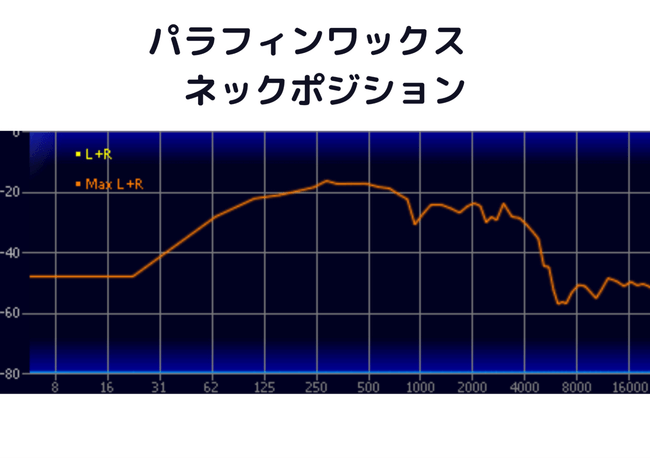
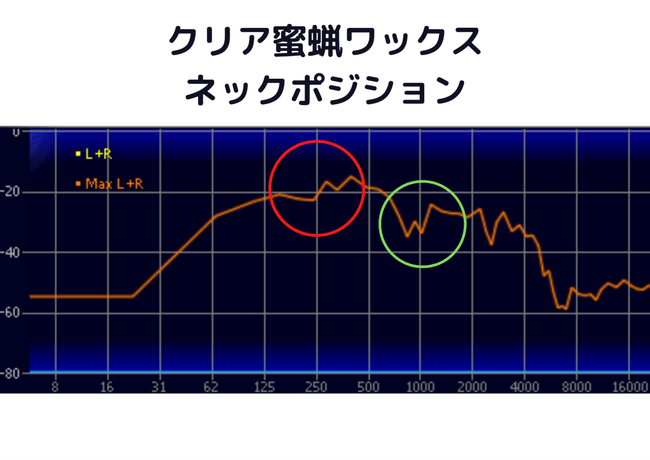
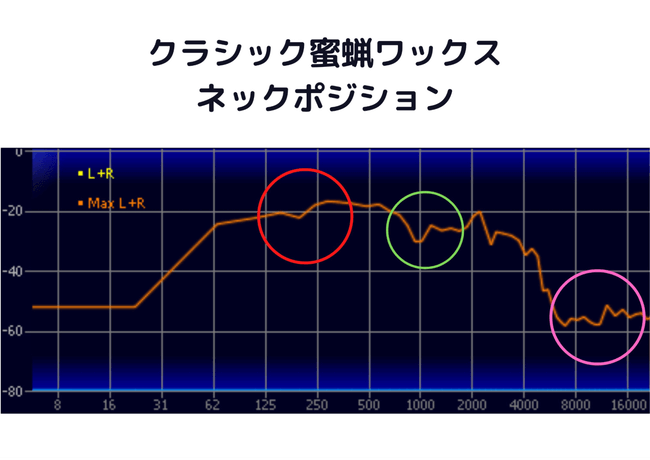
Cheena:I think I'll order a mini-ham for bass. Now, this is going to sound a little bit disgusting, but where do we start and end with pickups that can be called “hand-wound”? For example, using an electric winder and sending the wire by hand, or using a manual winder to make adjustments? Even if it is impossible to wind by hand without even using a winder. ......
Nemoto:This is just my personal standard, but I would monitor the winding from the beginning to the end, and if there is any unevenness in the winding, I would correct it immediately. This is what I consider hand winding, even if the machine is left to itself and I don't have to move my hand. If the winding is dirty but there is no problem with the function, there is no need to correct it, right? But if it deviates from the standards set by the manufacturer, the watch is rewound. In this case, even if the winding is done by a machine, a person is still needed. If I may add one more thing; it would be to have the maker do the finishing work such as insulation and molding. If it is done improperly, it will shorten the life of the product.
Cheena:If you monitor each piece and work on it by hand, it would be hand-wound, right? That is certainly true.
Nemoto:On the other hand, if a person is winding the rolls and the finish is not proper, I think it would be better to have a machine do it. If you don't want to put it on the market, that's fine...
Cheena:Looking at the finish of DIY pickups, you can tell they are freaks. ...... Oh, I wonder if they will come out with a ton of pickups like the hand mounted Alumitone.
Nemoto:You're making your own aluminum tone. It looks like it could be made, but the choice of materials and transformers would be difficult.
Cheena:I think it would be pretty good if that thing becomes the standard for pickups... I wonder if the patent will expire around 2027?
Nemoto:It would be good to do some research now. I think 5 years is a good preparation period.
Cheena:Since we are coil-less, it would be nice if we could use a metal 3D printer to make a Print-in-Place pickup other than cables, or something interesting like that.
*Print-in-Place: 3D printer terminology. When printing items with movable parts such as hinges and joints, it refers to data that can function without complex work such as assembly. In this case, it means that the data can be printed and used as-is.
Nemoto:Your dreams are expanding. It's time to start your own business.
I feel the age of pickups now that clones (reproductions of magnets that have lost their magnetism due to deterioration over time) are becoming available these days, instead of reissues.
Cheena:I am very close to starting my own business.
Yes, I've read the patent documents on Alumitone and Aluma series, and it seems that the coil itself exists ...... I honestly don't know if that's true, but it may not be a dream pickup, not surprisingly.
Nemoto:I'm guessing the coil is only wound for one turn, and then it's reinforced with a transformer for output? It's worth a try.
Cheena:Yes, it is. It's more like a U-shaped metal sensor that also serves as a mount. I'd like to study it, including how it is made noise resistant.
Nemoto:Should we also be concerned about the means of protection from extraneous noise? You're right, but I hadn't thought of that.
What other high-end brands are there? I thought about it and came up with TV Jones.
The picture is my bass (before adjustment). The pickups on it are for Thunderbird.
It has an image of being for Gretsch only, but they also make PUs for basses other than Gretsch, and the sound is surprisingly good.
TV JONES / Thunder'Blade Chrome Neck
Recommended for those who think Thunderbird is a little too fussy. It is not for those who do think that Thunderbirds are too fussy.
If you want something a little different, this is the bass for you.
It costs about 50,000 yen for both front and back, but you can easily put it on the front only for half price...maybe.
There is also one for Telecasters.
They also have a special bridge for mounting on the rear, which is a very thoughtful thing to do, but it is not very popular. If you don't want to use the same instrument as others, you should definitely try it.
Cheena:TV Jones is nice. I'd like to see more toaster-style ones, but I'd have to convert the ones I use for guitars.
Nemoto:I used to dislike this brand, but now I'm starting to like it.
Cheena:It looks really nice. Oh, EMG's TB series is also an option for Thunderbird pickups.
What's great about this series is that there are 6 kinds of pickups in the same size (DC, CS, HB, TW, J, and P), DC is humbucker, CS is ceramic & steel magnet, HB is passive, TW is tappable, and so on, but TBJ and TBP are not so different from other EMG pickups. TBJ and TBP are arranged in the same way as Jazzbe and Reverse Preve, respectively.
Thunderbird turns into PJ bass.
*All soap bar sized P types are reverse placement. All HB series are P type, but this one is regular placement.
Nemoto:I've never used it.
I think it would be a bit like an EMG, where the rampant low mids would be a bit less aggressive and the highs would be more relaxed, but still fat.
I'm reviewing a PU I've never used...
Cheena:I like TV Jones, other Thunderbird-compatible pickups, and Washburn pickups, because unlike regular jazzbet or plebe pickups, I don't have to square up the corners of the cavity. Not only is it easier to process, but it is also safer because thicker bits are harder to break, and there is relatively less wear.
Nemoto:It has that kind of advantage? I didn’t realize that. Now that you have said that, it does make sense.
Cheena:In that sense, Delano The Xtender is the best.
DELANO / The Xtender 5HE Bridge
Looks intense.
Nemoto:It's almost never used by major manufacturers, but it's highly employed by builder/luthier types. I want to buy a Straddy or a Marlow. They are beautiful and sound great. But they are expensive.
Cheena:Here is a very cool search result.
https://www.google.com/search?q=delano+xtender&sxsrf=ALiCzsbrrbZ12nhQrpW_NoaWPA6L6tyXow:1653742411557&source=lnms&tbm=isch&sa=X&ved=2ahUKEwiVn_bHnoL4AhWbPXAKHfc0BgsQ_AUoAXoECAIQAw&biw=2048&bih=1009&dpr=1#imgrc=SzsaSVEJBmoHEM
They are often used with Delano Sonar preamps.
Nemoto:Artistic lineup.
The Sonar is a handy preamp with EQ wired.
I've never used it, but I'm interested.
Cheena:My only regret is that it is a solid shaft. But I'd be happy to replace it.
Nemoto:I like split shafts too, so I'm a little disappointed about that. I probably won't replace it though. lol
Cheena:It's quite a limitation that you can't use speed knobs… or most plastic knobs…
Nemoto:It's tough unless it's a side screw type.
It would be fun if we could easily swap between split and solid, but that's too niche...
Cheena:You can pull the shaft out at least once, though. Are you breaking it ......?
If you want to convert close to split to solid, you just need a pot sleeve and a shaft spacer.
Nemoto:You can do it. When I tried to remove the knob that I forced in, the whole shaft fell out and looked like a mushroom.
I was able to put it back in, so I guess I can replace the shaft, but it's not something I would recommend to others because it's a very aggressive way to do it, so I tested it out myself.
Cheena:Knob mushrooms grow well, don't they? At least they don't make fairy rings or spread spores.
Nemoto:It would be terrible if they increase in number. We can't eat them.
Cheena:I wish we could harvest only the pegs. ...... But to avoid this kind of thing, make sure the inch and millimeter are aligned and the potato screws are aligned in the direction of the groove, and don't overtighten them. We can’t use bent split shafts!
Nemoto:We have cried many times.
Cheena:Let's take a quiet break. Let's go back to pickups.
I think this is an interesting one. Dingstrand Nordwall pickups that give you the sound of a Dingwall on a regular bass guitar goes for $300 and up.
Nemoto:That's a playful name.
I do think the Dingwalls sound good.
But it used to cost about 200,000 for a new one, so it's hard to buy one at today's prices....
I recommend this to old schoolers (including me) who are
Cheena:Dingwall $2,500 brand new. If the yen rises to what it was in the 80's, it will be around 200,000 yen.
If I were told that it is size-compatible with Bartolini or EMG and has the same sound as Dingwall, I would choose Dingwall. For practical use, you should be able to use it for instruments with slanted fretting.
* 1. Slanted fretting......A setting in which the fretting is at a constant angle to the centerline, with the bass string side leaning toward the bridge. Rickenbacker sold it in 1975, and it is older than fan frets and bend frets.
* 2. It was announced in the 1975 Rickenbacker catalog as the slant model Rickenbacker Model 481, but there is no mention of it in the 1968 catalog. Fan frets were patented in the U.S. by Novax in 1989, and in Japan by ATLANSIA in 1999. No information at hand on bent frets/curved frets. Circle Fretting System, True Temperament, etc. are also fret bending technologies, but for different purposes.
Nemoto:80 yen to the dollar is the level of the super-strong yen after the earthquake.... It was really cheap back then.
Fanflation is 100,000 or so at the cheapest, so you might as well buy it and replace it.
Cheena:It was high around 2010-2013. Looking at the money records, it was close to 70 yen 1 years ago.
I think this is the one bass that is just barely under 100,000 fanfic...Ibanez SR-Multi Scale.
If I were to make my own, the bridge would have to be freestanding, the pickups would have to be larger than normal, and the nut would have to be cut at an angle, but pegs are always nice to have for general use: .........
Totally unrelated, but here's a multi-scale kit.
299AUD means less than 30,000 Japanese yen, less than 10,000 for shipping, and 40,000+α with a little bit of customs duty. It's a manufacturer that works well for customization, so it's good if you want to do fan-freaking-thunderbirds or extreme customization... I want a D-Roc, so...
Nemoto:A lot of people were saying with a straight face at the time that it was going to go to 63 yen. Almost no one expected it to be 50 yen.
Multiscaling is a real pain in the ass. I don't want to do it and I can't do it.
Cheena:If it's lineless, I wonder if I can make it variable by shifting the bridge somehow and adjusting the nut side with a spacer like S.O.S. It would be more difficult to get the original lineless. ......
Nemoto:It would be easier to make a new nut groove for the multi-scale nut side and fit the nut in either the old or new groove. Maybe. If you remove the frets and coat the fretboard with colored epoxy resin or something like that and color it, it wouldn't be that difficult to go lineless.
Cheena:I didn't think of that because I'm not good with colored fretboards, but there you have it.
Can you make it with clear epoxy by cutting and pasting thin veneer?
Nemoto:I like the idea of using a veneer. Quilted maple looks good. Flame maple is usually used for fingerboards and necks, but quilted maple is not so common.
Cheena:I like the idea of a quilted fretboard bass.
I'm getting sidetracked now. ...... What parts should we talk about next?
Nemoto:Nemoto: How about pegs?
Act III: Pegs & Miscellaneous
Cheena:I came to the peg swamp and found a variety of unusual things….
Basically, the lightweight ones and the ones with beautiful colors are more expensive.
Nemoto:Wooden peg buttons are becoming more and more common these days.
They are expensive and fragile, so they have a strong high-end feel.
Cheena:Other writers are paying attention to them, and I think they are being written about so much that they are glossed over rather than hand-worn. What has not received much attention is Gotoh's wooden buttons, which are called the Nature Mode series, and there is quite an assortment, including Giricote, Granadillo, and Ebony.
By the way, granadillo, commonly known as Mexican rosewood, and granadilla, also known as African blackwood, are two different things. They are both in the Fabaceae family, and it's hard to tell.
As for the bass, we've done it in the past, too. ...... Do you have any super high quality wooden peg buttons or something like that?
Nemoto:A friend of mine ordered 3A grade snakewood peg buttons for 50€ each (both he and I only vaguely remember).
Maybe it's not commercially available and it's prone to cracking, so he'll have to order another one to make it. I think that base was 1,950,000 yen. It was cheaper than I thought, but I can't afford it...
Cheena:6,000-7,000 yen for one... ...... I wonder if I could go that much if I did Maki-e on a regular peg button... ......
Joking aside, here's the peg itself.
Nuts, saddles, and the oddball RATIO pegs from GraphTech, famous for its piezo pickups, are said to be capable of “the fastest and most accurate tuning in the world.”
As you can see in the picture, the highest gear ratio is 39:1 for guitar and 48:1 for bass; the ability to go up or down exactly a semitone in a half turn is a selling point. The screw :( is cute.
For guitars, they even sell locking pegs.
Nemoto:What an interesting and useful product. I might buy it depending on the price.
Cheena:The bass set is 25,000 yen, a little more than Gotoh's carbon series, but that includes shipping. ......
Nemoto:I'm not sure if I'm willing to buy it. I'll wait for Soundhouse to carry them for now.
Cheena:I'll ask them later.
Nemoto:I guess so. If they carry it here, I can buy it with peace of mind. And they offer free shipping.
Cheena:Okay, now for something that is somewhat handled: ......
How about Schaller Da Vinci?
SCHALLER / Da Vinci M6-C (3/3)
Nemoto:The fact that they prioritize design over practicality has something to do with jewelry watches, doesn't it? I like the open gear pegs and find them quite beautiful.
Cheena:The fact that both the guitar and bass pegs have the exact same design in different sizes shows an extraordinary level of attention to detail.
I like the M4S, which can be called half-open. ......
Nemoto:M4S is cool. I like BM.
It's not safe or interesting, but it's high performance.
Cheena:In the end, open gears like Schaller BM or Gotoh GB10 are solid and convenient with interchangeable parts.
By the way, if you had a clover key, a lollipop key, and a Y key, which would you use?
Nemoto:If it is a general Fender type, 4 strings -> Lollipop, 3:1 etc. -> Clover.
Non-fender type depends on the body size. If it's a large body, it's Clover, if it's a compact body, it's Y. If it's a Fender type, it's Y if it's more than 5 Fenders.
I'm rather particular about it after saying so myself....
Cheena:Yes, Schaller, Hip Shot, and Gotoh also have different Y-key shapes (Schaller has the most common Y shape, similar to Warwick, Hip Shot has no hollow at the top, and Gotoh's top is more like an M shape than a Y shape).
Nemoto:The thickness is different, too, and I wonder what that is.
I think it was Yamaha, I think there were some pegs with Y-keys shaped differently from those.
Speaking of Yamaha, they should sell Y-keys made of white plastic (the ones on the TRB-JP). White is rare, isn't it?
Cheena:I think I have a strong image of it loaded on BBNEII.
YAMAHA / BBNEIIWH Nathan East Model White
Nemoto:Well, you were on it. I completely forgot about it.
I don't have a choice, but with a bass, there are not many peg buttons made of plastic material, so if I made one, I might be able to sell it.
Cheena:In the meantime, Gotoh GB707 is plated plastic. However, I have produced plastic buttons in various designs, and most of them were quite fragile or were scraped off to spin around. It is quite difficult.
Nemoto:I guess you can make them thicker like the Y key if you don't feel uncomfortable with it.
Clover and lollipop are difficult. Carbon is there though.
As you can see, this is a high-end product, 4 times as much as GB10.
I'd buy it if I needed it, but I wouldn't buy it out of curiosity.
Cheena:It's a single board button to begin with, and I think it's better to drill a hole and make a skeleton shape than to replace the material and do something else. Even if we don't consider whether it looks good or not: ......
Nemoto:Speaking of looks, this is a double bass from My Room. Do you see the engraving on the base plate?
It would be nice to create a sense of luxury in this direction.
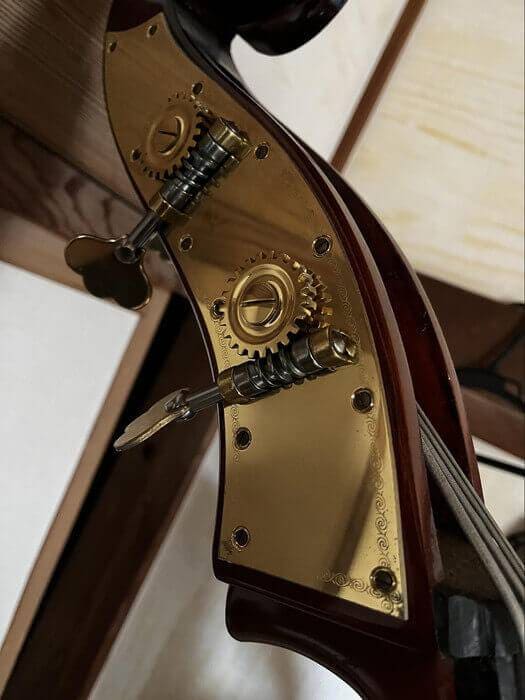
Cheena:Well, I think about this kind of engraving. I was wondering if Zemaitis was doing something, but it looks like Gotoh and Schaller are using them.
Nemoto:I wish they would make pegs for electric basses. Maybe it's inevitable because there's a little space for engraving.
There are a lot of joint plates, though.
Cheena:There is a lot of flexibility in the plate part. ......HATA's stainless steel machining, tatsuta titanium parts' titanium hammered plate, and so on.
Nemoto:HATA is a quintessential HATA, and you make some core stuff.
Cheena:I've introduced it before, so I'll skip it. I mean, I'm about to run out of material. ......
Nemoto:I guess so.... Let's wrap it up soon.
Thank you very much.
Cheena:Thank you very much.
The “sound & person” column is made up of contributions from you.
For details about contributing, click here.





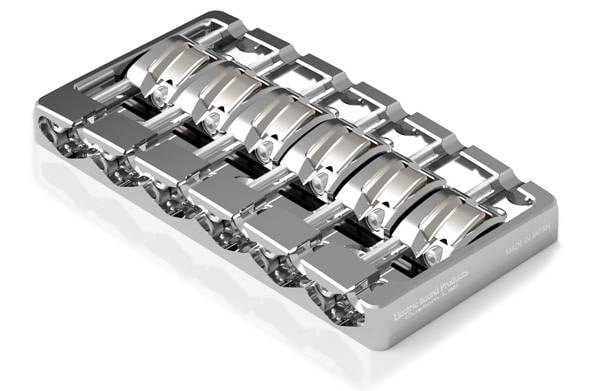
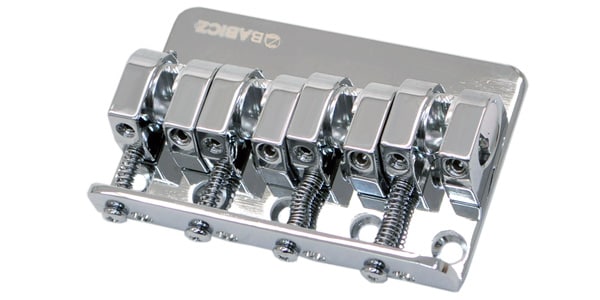
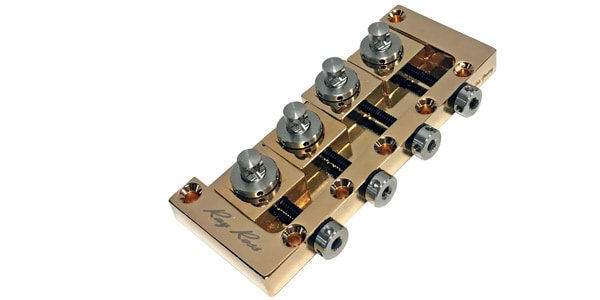
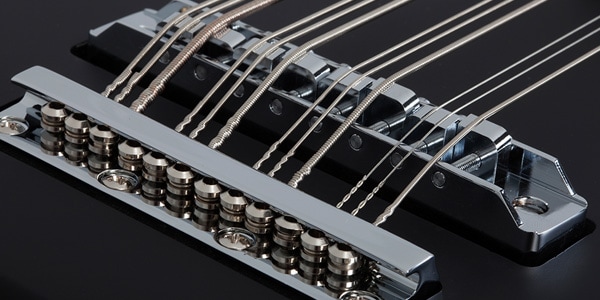
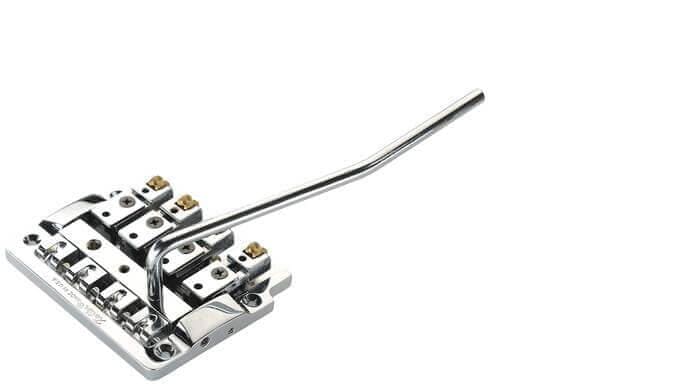
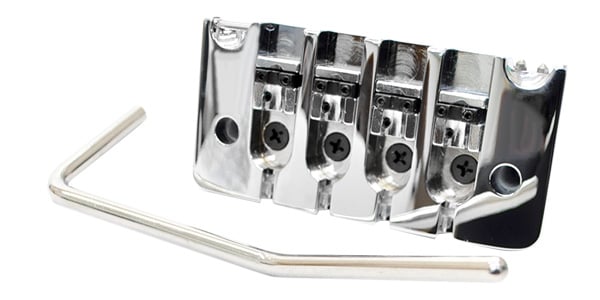
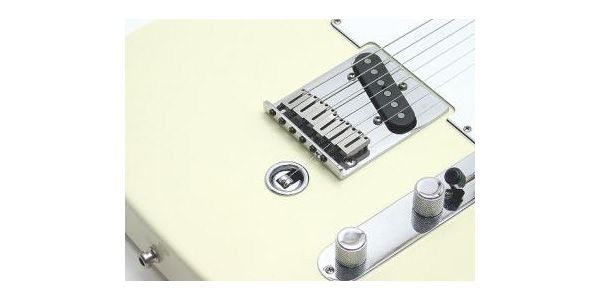
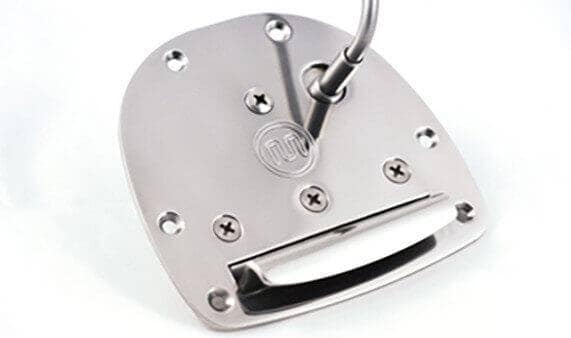
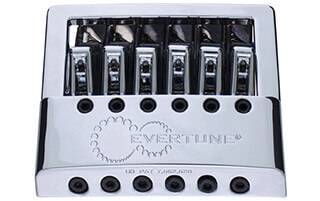
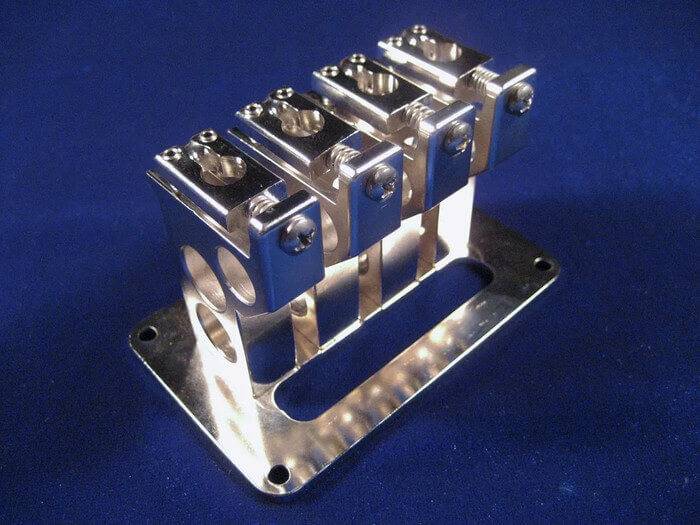
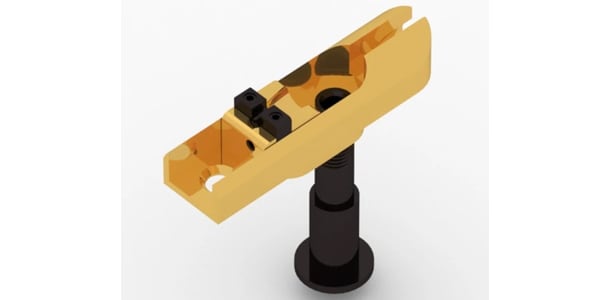
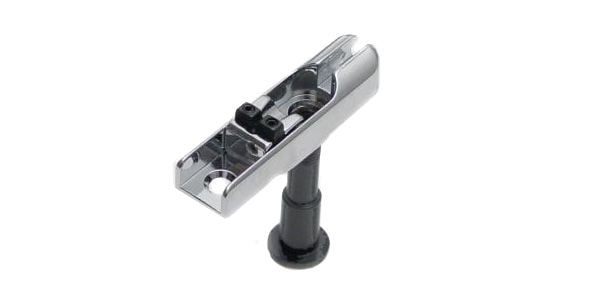
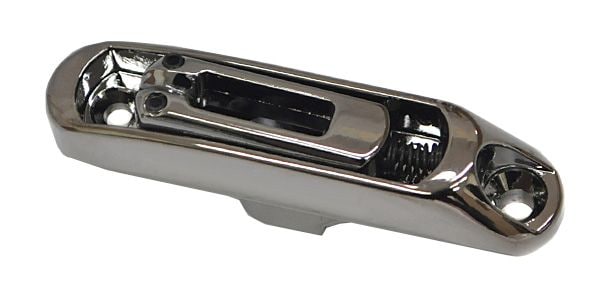
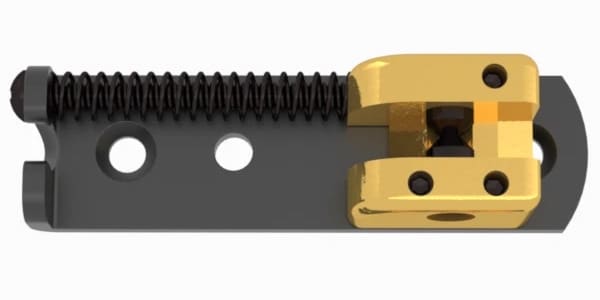
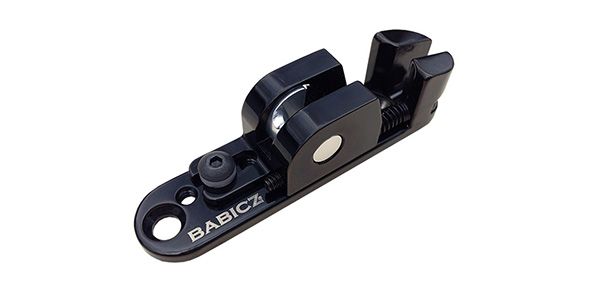
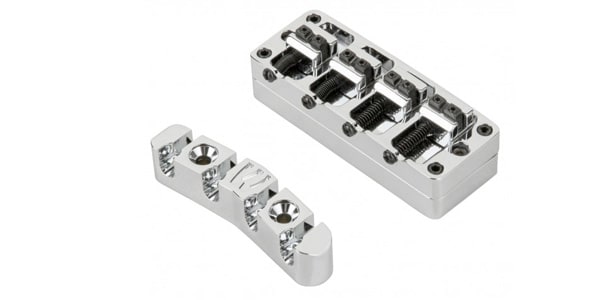
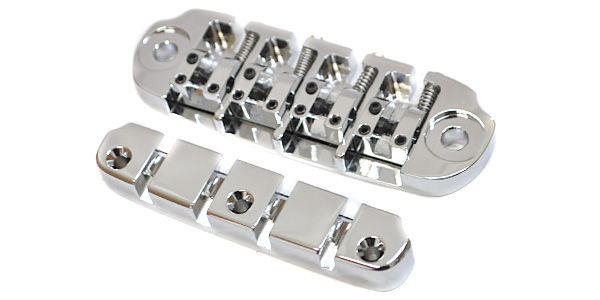

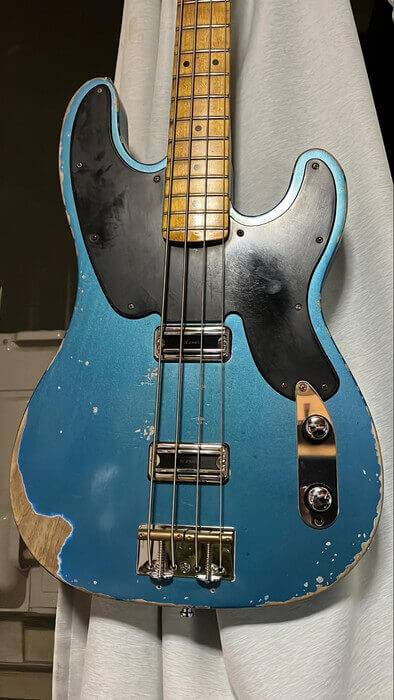
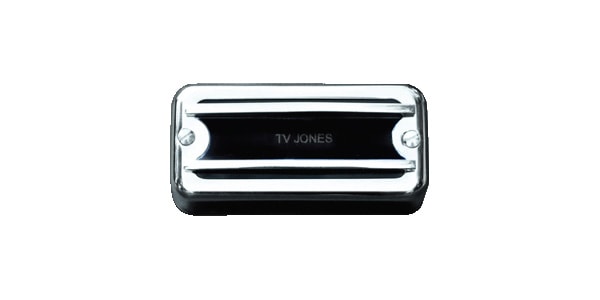
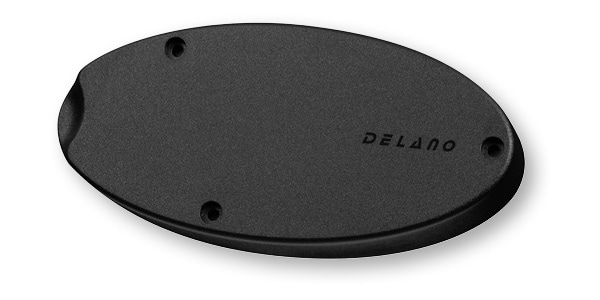
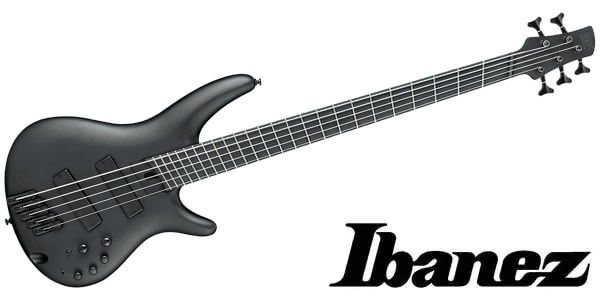

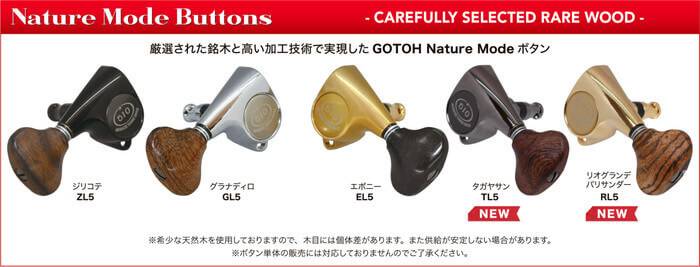
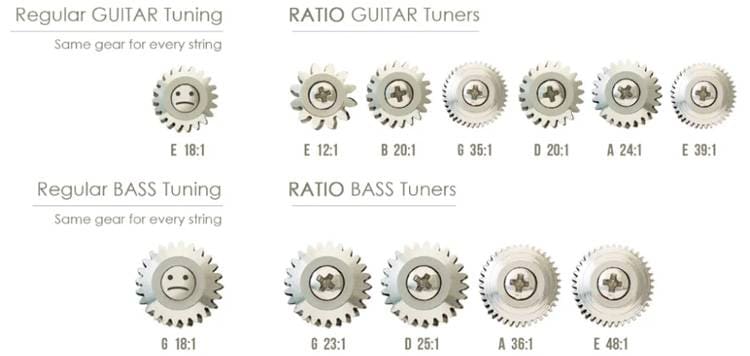
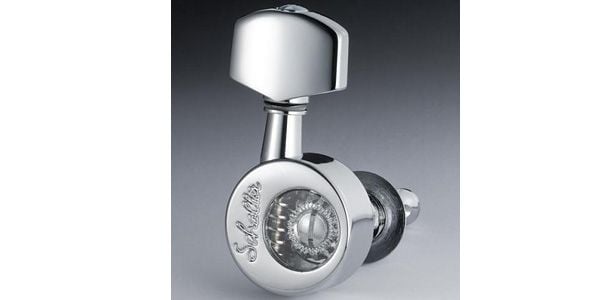
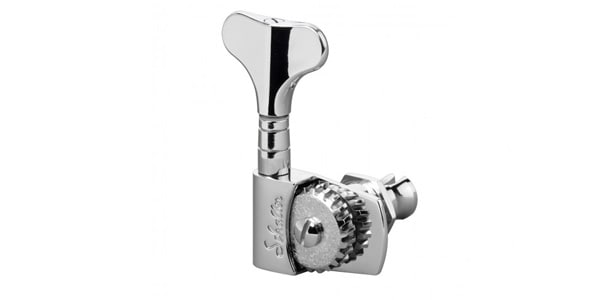
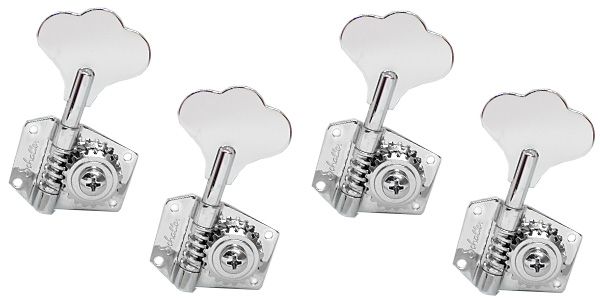
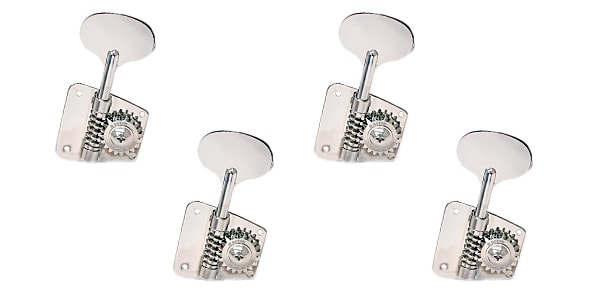
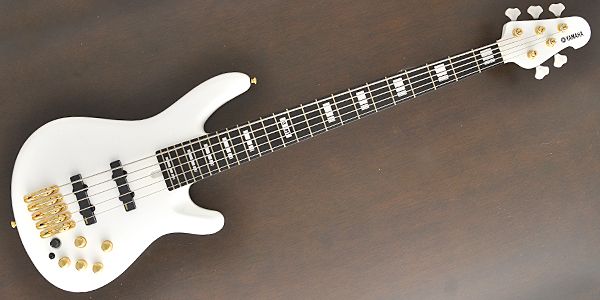
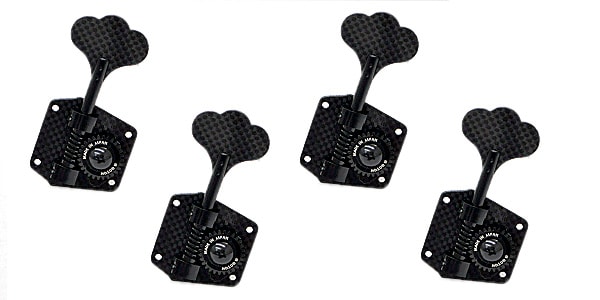
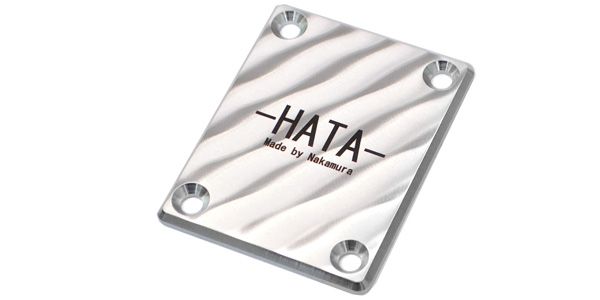
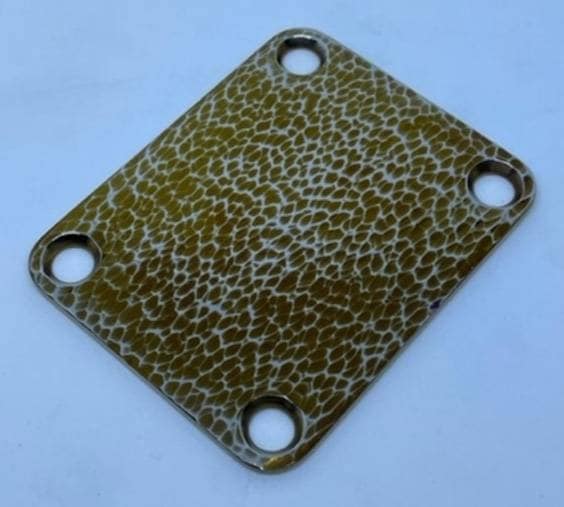










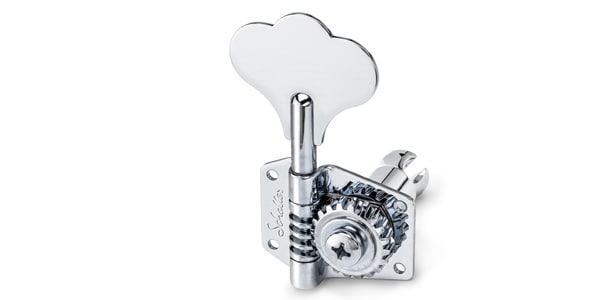






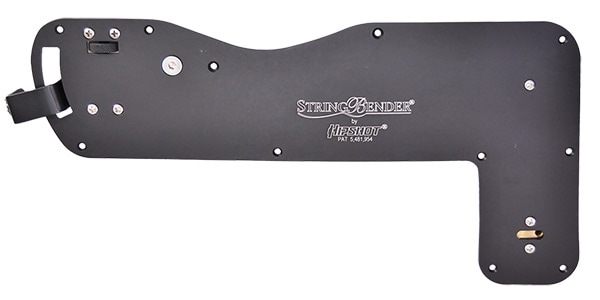










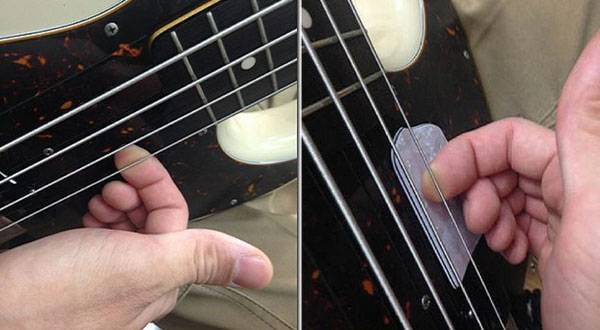
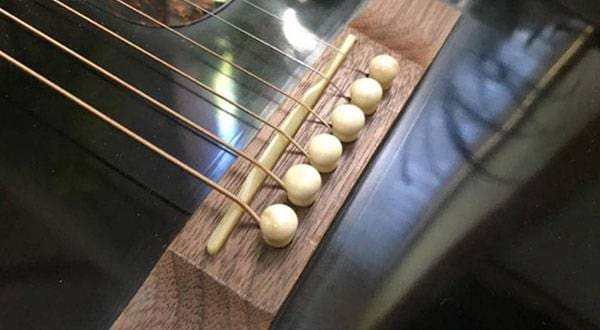
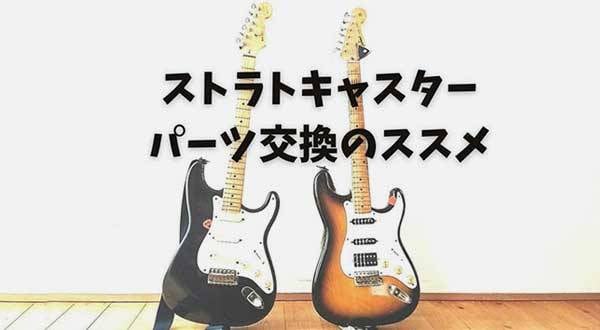
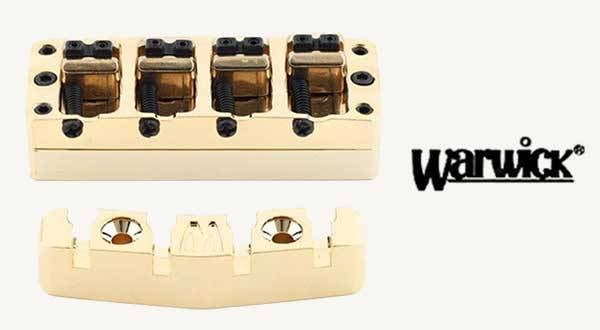
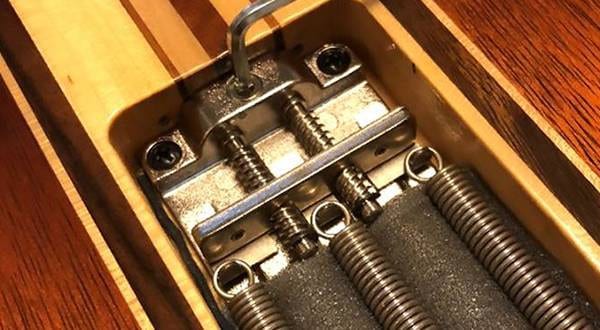

 ギターパーツの沼
ギターパーツの沼
 基礎から学ぶベースレッスン
基礎から学ぶベースレッスン
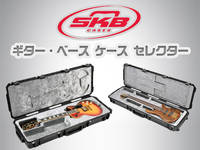 SKB ギター・ベースケースセレクター
SKB ギター・ベースケースセレクター
 超オススメのフレーズ道場 ベース
超オススメのフレーズ道場 ベース
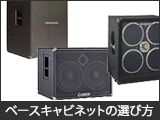 ベースキャビネットの選び方
ベースキャビネットの選び方
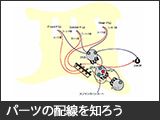 パーツの配線を知ろう
パーツの配線を知ろう















